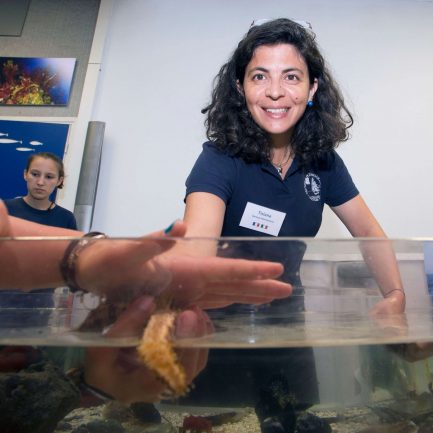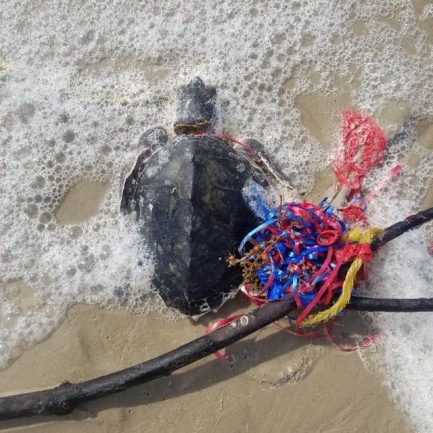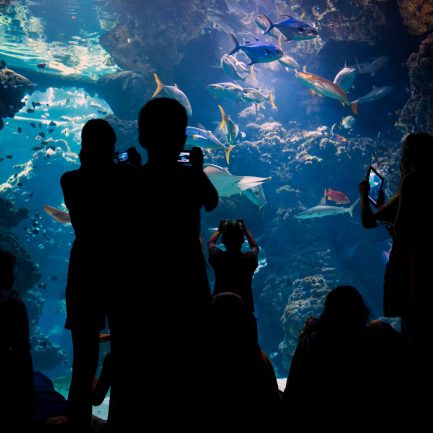"LET'S LIVE THE OCEAN".
- Home
- Actualités
- Our statement for the Ocean
Our statement!
We believe that the Ocean is ONE: that it is global and that it unites the whole World. Man and Species. Men with himself, his past, his present and his future.
We want to show that everything brings us together and that our history and our future are intimately linked on our blue planet.
Strengthened by this union, our mission is to reveal, transmit and amplify this strong and vital, timeless and universal link. We unite all the sciences because there is still so much to discover, in keeping with our “pioneering and always first” spirit of more than a century.
We create and invite to different explorations, which have sense, new and holistic, of connection between the Ocean, the Men and the Species… And beyond that: a connected universe.
We want to inspire new universal solidarity and protect our common future.
Because we know that together we are stronger, we work hand in hand with a multitude of different actors and partners who work for our blue planet.
The campaign's ambassador species
"Let's live the Ocean".
— Endangered species
NAPOLEON FISH OR GIANT WRASSE
Like many fish, it is hermaphroditic, which means that it can change sex during its life. It is born female, some will become male. He can be recognized by his thick lips and the bump on his forehead. It can measure more than 2 meters, weigh up to 190 kg and live beyond 30 years, it reaches sexual maturity between 5 and 7 years. Very popular in the food trade, the Napoleon is disappearing in a large part of its distribution area. It is now classified as an endangered species by the IUCN and in Appendix II of the International Convention on Trade in Endangered Species.
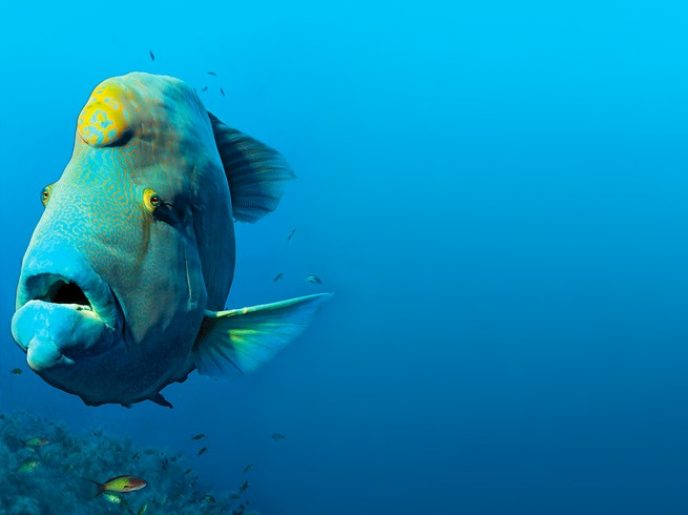
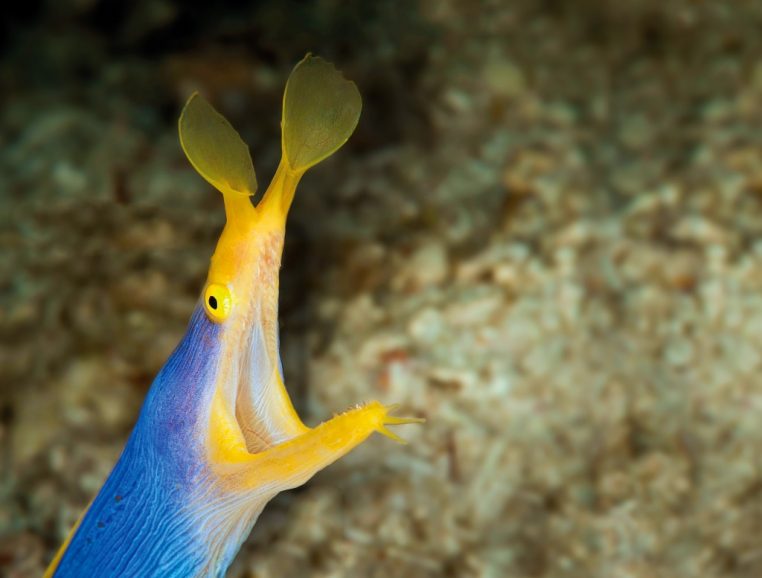
— Get involved!
THE “TURTLE TRAIL”
This fish has an extremely slender and serpentine body that can reach 1.30 m. Like all moray eels, it has no scales. The dorsal fin is narrow and runs along the body from the back of the head to the tail.
Rhinomuraena quaesita has three splendid liveries during its life. The juveniles are black with yellow dorsal. They then become electric blue male adults with bright yellow dorsal fin, eyes and snout. (see the photo of our campaign) Finally, when the males transform into females, the latter display a bright yellow livery, the posterior part of which may remain tinged with blue. This moray eel can be found in the waters of lagoons and near reefs from the first few metres of the sea bed.
— The Institute and the Principality are doing their part
THE TREATMENT CENTRE
This A strange fish, with a body formed of polygonal bony plates welded together, giving it a box-like shape, with two long horns on its head. It lives preferably in shallow sandy-muddy coral lagoons, seagrass beds, harbour areas and estuaries, between 1m and 50m deep, sometimes up to 100m. It is not a good swimmer, it moves thanks to the fast undulations of its dorsal, anal and pectoral fins. He is not defenseless, however, his body contains toxins and he is capable of growling in case of stress. Its life expectancy is 15 to 20 years.
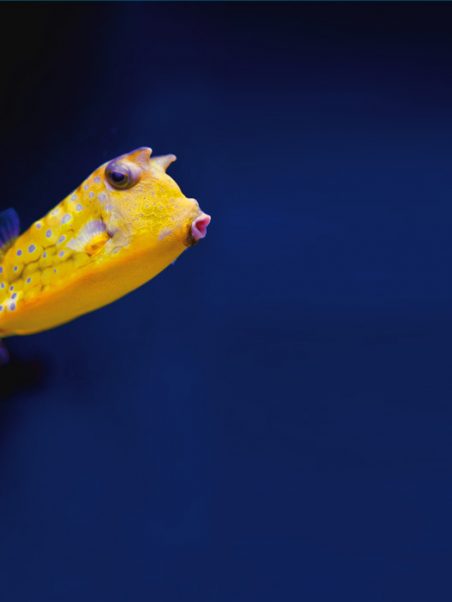
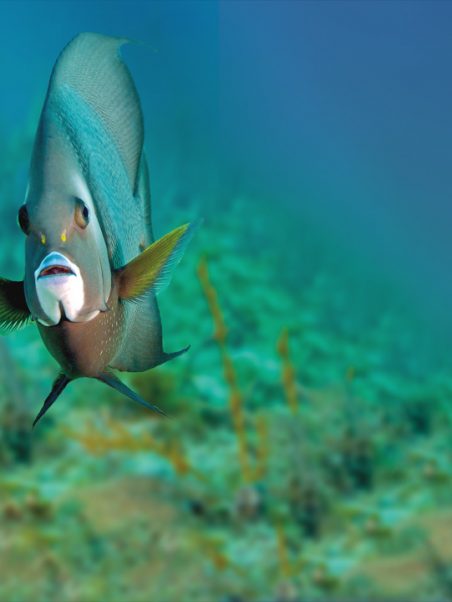
— Meet Avril and Samy
WHERE DO OUR "PATIENTS" COME FROM?
It lives solitary or in pairs, sometimes in small groups, in rich coral reefs, at a depth of 2 to 30 m. The shape of these fish is adapted to their habitat and nutrition: it allows them to move gracefully and efficiently through the organisms and life attached to the reefs while precisely positioning their mouths to reach and graze on food. Angelfish swim between the reefs tilting their bodies to the side. It is assumed that this behaviour allows them to appear smaller to predators, by blending in more with the dark background.
— Objective: freedom
RETURN TO THE SEA
Balloonfish(Tetraodontidae) and porcupinefish(Diodontidae) are very easy to recognize. They have the ability to inflate with water within seconds in case of threat or stress. By inflating like a “balloon”, they appear larger and are more difficult for predators to bite. Porcupine fish have their bodies covered with plated spines, which straighten out when the fish inflates, unlike balloon fish. Most of the species secrete a violent poison called “tetrodotoxin”, like the famous fugu (species of the genus Takifugu), which cause numerous poisonings in Japan every year. Most species are 20 to 50 cm long. Balloonfish and porcupine are easily observed while snorkeling on the rocky and coral bottoms of tropical and subtropical seas, often at very shallow depths.
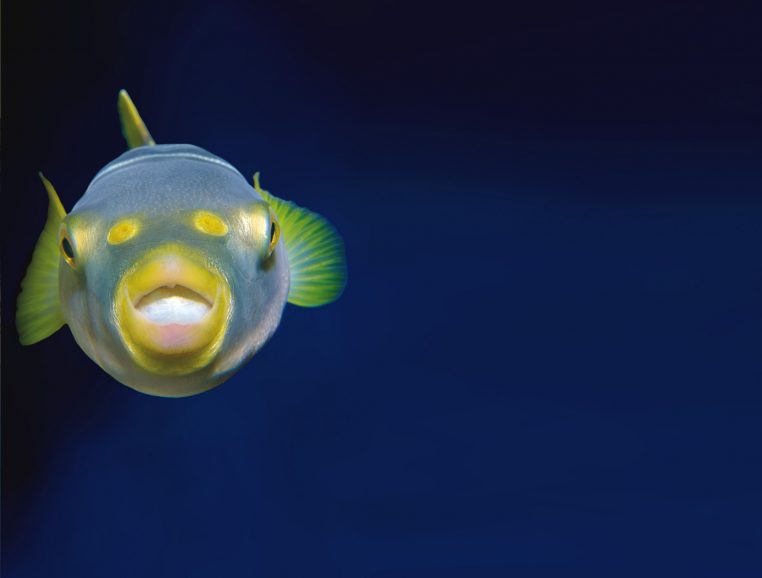
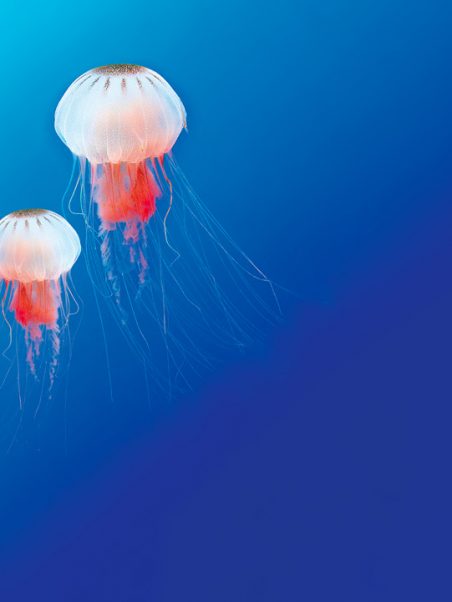
- Chryzaora sp
Radiated Medusa
It is a pelagic species that can often be found in groups of several individuals. It is common in the spring but varies considerably from year to year. It is a stinging jellyfish. Its main predator is the sea turtle.
Increasingly numerous in the world’s oceans, jellyfish, animals that are both fragile and fearsome, could impose themselves on fish and seriously threaten the marine balance, which is already under strain. Nearly 1,000 species have been identified, including the Pelagia Noctiluca, which is very common in the Mediterranean. Jellyfish come in a variety of shapes (round, square, flat, domed…) and sizes ranging from a few millimetres to over two metres in diameter. 98% of their body is made up of water, formed by a bulging part (the umbrella), where the mouth and the reproductive organs (or gonads) are located, which can be observed through transparency. All around, a series of tentacles with stinging cells are used to harpoon prey.







